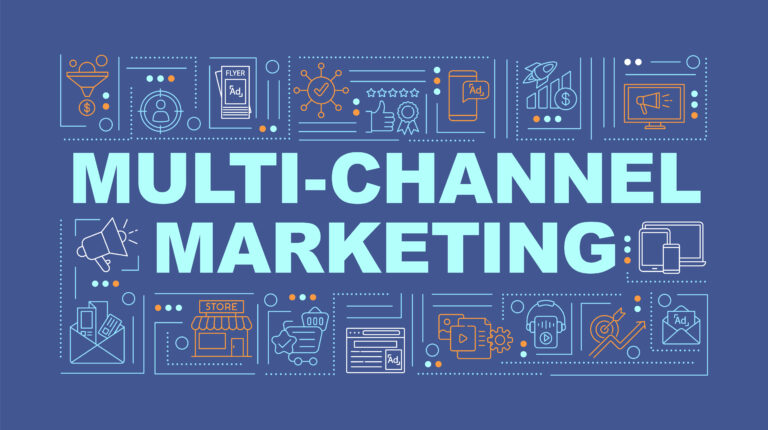Most brands learned long ago that a consistent social media presence is key to reaching past, current, and prospective customers. But well into the social media age—with Facebook old enough to vote in American and some career TikTok influencers now pulling in $100K-plus a post—plenty of businesses still haven’t embraced the importance of crafting a focused social media strategy.
Effective social media strategies are carefully calculated and meticulously researched. They’re evidence-based, audience-focused, intentional, and consistent. Deliberate content creation like that delivers massively valuable data about what your ideal audience wants from you, and why, and when, and how. But still, the age-old spray-and-pray marketing approach persists on social media, especially when it comes to organic content.
If you’re struggling to structure and focus the way you market your brand on social channels, here’s some context on why and how to change that.
The Benefits of Shaping a Social Media Strategy
Imagine building a house without a blueprint or embarking on a cross-country trip without a map. Both methods are bound to deliver adventure, but the likelihood of reaching your intended goal is low. The same holds true for social media content. Without a concrete social media marketing strategy, you’re aiming for valuable discovery but navigating choppy seas in a dinghy, without a compass or a way to know you’ve arrived.
With a solid strategy, social media content—unlike many forms of marketing content—can meet consumers at every stage of the buying process and help encourage full-funnel progress:
1) Brand Awareness
At the top of the marketing funnel, social media introduces your brand, builds awareness and familiarity, and starts inspiring trust.
2) Audience Engagement
At its best, social media is a give and take—you share, connect, and repeat, which gives your business a chance to foster real relationships with customers. As those relationships develop, customers become your best marketers. (Statistics show that word of mouth easily beats advertising in effectiveness, driving five times more sales.)
3) Customer Loyalty
With an active social media community, your business can provide personal, easy-to-access customer service in real time—a competitive advantage when it’s stacked up against automated telephony and canned chatbot responses.
4) Repeatable, Trackable Customer Feedback
Strategic social media marketing includes regular monitoring and analysis of metrics. Tracking data helps you better understand your audience and make informed decisions, adapting to trends and consumer behavior. That feedback loop is, in and of itself, market research for current and future projects.
5) Measurable ROI
A clear social media marketing strategy allows you to set specific goals, like website visits or lead generation, and track your progress. This leads to a measurable return on investment that can be analyzed and improved upon over time.
Understanding Your Voice and Your Audience
Defining who you are—and who you aren’t—is a great place to start when building your brand’s social media strategy. What does your brand voice sound like? What words and phrases does your brand use when talking about itself and its place in the world? What topics do you and your target audience care most about? What problems are you solving for the people who support your business?
The answers help you form a framework for the social media content you produce and how you share it.
A B2B social media strategy differs distinctly from a B2C social media strategy. A youth-oriented brand engages with its consumers with a completely different way than a B2B organization focused on seasoned professionals. Research, define, and refine who you’re talking to, how they prefer to communicate, and where in the digital world they hang out most.
Hallmarks of Authentic Social Media Marketing Strategy
Every brand has a story—a unique narrative that sets it apart from competitors and resonates with an intended audience. A focus on sharing this narrative, consistently and authentically, forms the core of every well-structured social media marketing strategy. It’s about crafting a journey that your audience can follow, engage with, and become emotionally invested in.
As social media got ingrained in our culture, consumers became pickier and more savvy. They want authentic connections with brands they trust. Those are born out of genuine storytelling.
The beauty of social media as a storytelling tool: versatility and user stickiness. A frustrating thing about social media marketing: one-size-fits-all strategies don’t and can’t exist. Every brand is unique, with distinct goals, target audiences, and messaging.
An effective social media marketing strategy needs to be as unique as the brand itself.
The Symbiotic Relationship: Paid and Organic Social Media Strategy
In the world of social media marketing, paid and organic strategies are two honed sides of a sharp blade. They help each other—and your business—cut through the noise to reach your goals.
Key benefits of a paid social media strategy: targeted reach and speed.
Paid social media is a quick and narrow net you can cast to attract key audience members. Platforms like Facebook, Instagram, and LinkedIn have highly sophisticated tools with refined targeting capabilities that pinpoint specific subsets of the larger social audience. Based on demographics, interests, behaviors, life events, and keywords, they can home in and deliver what feels like personalized marketing messages to these consumers.
The guaranteed focus and delivery that comes with social spend means paid social media delivers much faster results than organic social media. An organic strategy can take lots of time to bear fruit, especially as competition increases and algorithms continue to change. Paid campaigns are designed to deliver visibility, traffic, and conversions—at a pace and breadth controlled by your budget.
Key benefits of organic social media strategy: authentic engagement and long-term growth.
It takes commitment—sometimes seasons of it—to sow progress with organic social media. But organic content remains a core tool for brand storytelling and brand growth.
Your organic social feeds are your front porch. They’re your welcome mat. And a friendly, well-branded “welcome” is important to your marketing growth—43% of all internet users go to social media when researching items to buy or browsing for new purchase ideas.
Here, authenticity shines, and smart companies nurture new relationships and deepen existing ones. Paid content may help drive a conversion, but great organic content makes consumers fall in love with your brand.
The Best Social Media Platforms for Your Business
It’s tempting to try to maintain a presence on every established social media platform and to jump onto every new one that makes its debut. But that usually isn’t sustainable, and it certainly isn’t strategic.
Instead of stretching resources to keep a so-so presence on every social platform, focus on excelling on the platforms that make the most sense for your business—the ones where your target audience spends the most time, and the ones that suit your most meaningful content.
It takes expertise and research to figure out your priority platforms—TikTok suits certain brands best, LinkedIn brings the right ROI for others. There’s overlap, but each platform is and has its own niche.
Ideally, you’ll focus on two priority platforms that offer the most consistent reach to your most appropriate audience, with well-aligned opportunities to show problem-solving, personality, thought leadership, and authentic storytelling. Then you’ll optimize content to suit the expectations and algorithms on each platform, specifically and pointedly.
Need Social Media Strategy Help?
If there’s a fundamental takeaway to all of the above, it’s that setting a firm social media marketing strategy is important—but it’s also hard, and it can be intimidating and time-consuming too.
Snapshot has a digital team devoted to organic social media strategy and content development and to paid social media advertising. If you need a trusted partner to handle the vision and the execution, we’re here to help. Contact Snapshot and tell us about your digital marketing needs.








